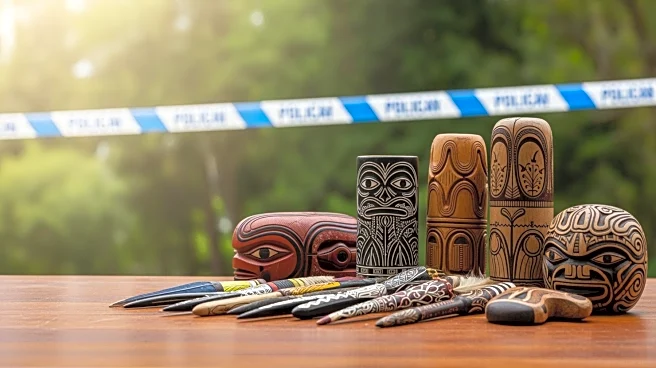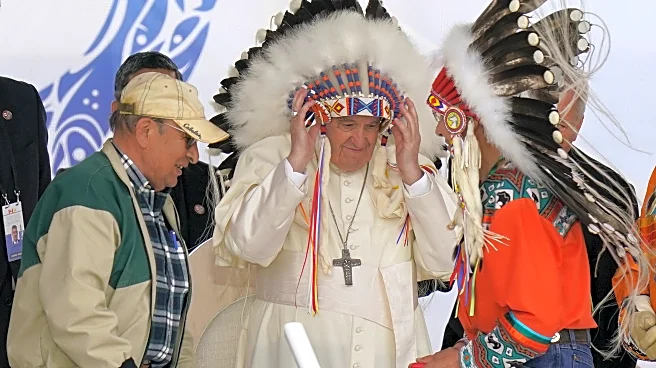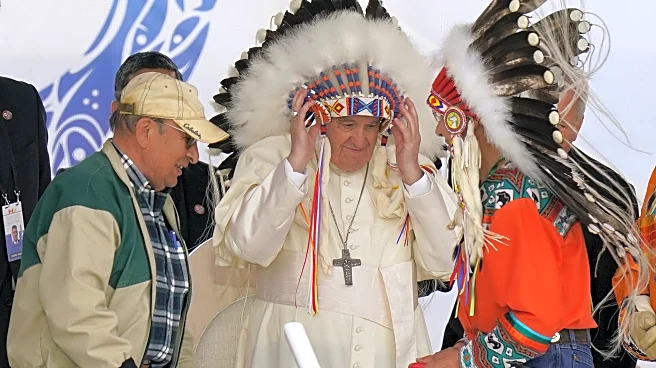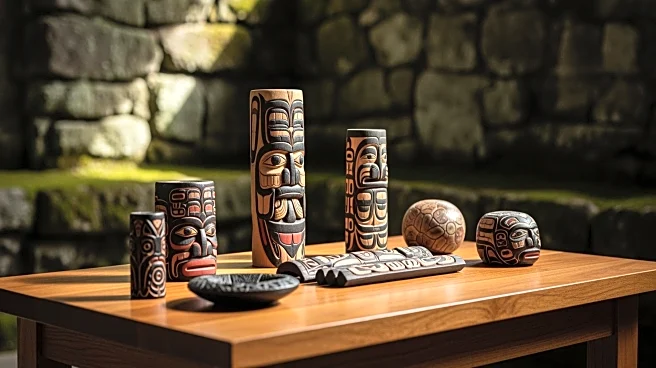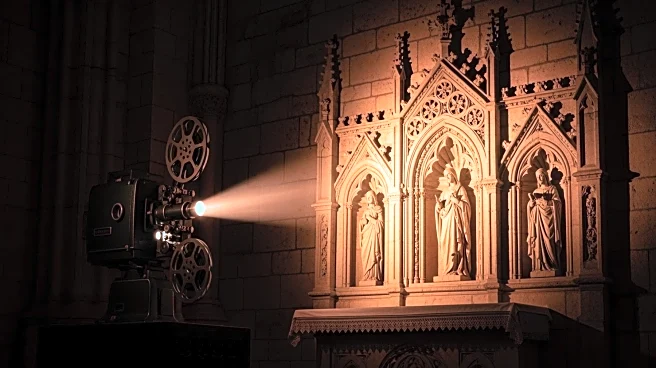What's Happening?
The Vatican has returned 62 artifacts to Indigenous peoples from Canada, marking a significant step in the Catholic Church's efforts to address its historical role in suppressing Indigenous cultures in the Americas. Pope Leo XIV handed over the artifacts,
including an iconic Inuit kayak, to the Canadian Conference of Catholic Bishops. The items, part of the Vatican Museum's ethnographic collection, were originally sent to Rome by Catholic missionaries for a 1925 exhibition. The Vatican maintains that these items were gifts to Pope Pius XI, but historians and Indigenous groups have questioned the voluntary nature of these offerings due to the power imbalances during the colonial period.
Why It's Important?
This return of artifacts is a crucial part of the Vatican's broader reckoning with its colonial past, including its role in enforcing policies that led to cultural genocide, as identified by Canada's Truth and Reconciliation Commission. The move is seen as a concrete gesture of dialogue, respect, and fraternity, and is expected to aid in the reconciliation process between the Catholic Church and Indigenous communities. The artifacts will be initially housed at the Canadian Museum of History, where efforts will be made to trace their origins and determine their future custodianship.
What's Next?
The Canadian Catholic hierarchy has committed to ensuring the artifacts are properly safeguarded and preserved, with the understanding that the ultimate keepers will be the Indigenous communities themselves. This initiative follows Pope Francis's 2022 meeting with Indigenous leaders, where he expressed support for returning such items on a case-by-case basis. The Vatican's recent repudiation of the 'Doctrine of Discovery' further underscores its commitment to addressing historical injustices.
Beyond the Headlines
The return of these artifacts is part of a larger movement within the Vatican to confront its colonial-era complicity. The Vatican's formal repudiation of the 'Doctrine of Discovery' marks a historic acknowledgment of its role in legitimizing the seizure of Native lands. This development may influence ongoing debates about the restitution of cultural goods taken during colonial periods.
